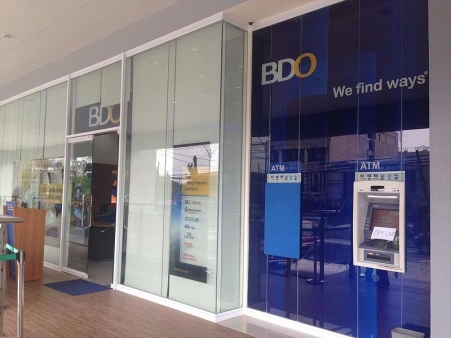
Philippine Central Bank could cut reserve requirement in 1Q17
A 1-ppt reduction could increase banks' earnings by ~1.5%.
Maybank Kim Eng previously noted the need of several banks to raise capital next year in light of the government’s infrastructure spending target. After BDO Unibank, Inc (BDO), we believe three more banks, including East West Bank (EW), Bank of the Philippine Islands (BPI), and Philippine National Bank (PNB), will have to revisit the capital markets next year.
"In lieu of this capital need, the financial system has nearly PHP1t currently in the overnight deposit and term deposit facilities. In addition, we believe the central bank (BSP) will start reducing the RRR, which is one of the highest in the region at 20%. This should bode well for the sector as a 1-ppt reduction could increase earnings by ~1.5%. Our top picks in the sector are BDO and Metrobank (MBT)."
Here's more from Maybank Kim Eng:
Steady migration from ODF to TDF…
Recall that the central bank (BSP) shifted its monetary operations to an interest rate corridor (IRC) system in 3 Jun 2016. In this regard, the special deposit account (SDA) facility was replaced by the overnight deposit facility (ODF), with an unchanged rate of 2.5%. Furthermore, a term deposit auction facility (TDF) was introduced to serve as the main tool for absorbing liquidity. TDF offering started at PHP30b and has increased gradually overtime, now set at PHP130b starting Nov.
…may result in lower reserve requirement
As of end-Sept, liquidity remained abundant at PHP964b (ODF: PHP634b) and (TDF: PHP330b). The ODF:TDF mix has gradually changed to 66:34 in Sep from 92:8 in Jun. The BSP mentioned previously that it would consider reducing the RRR once the mix reaches 50:50.
At the current rate of change in the mix (est. at 7% last month), we expect to see the steady migration of liquidity from ODF to TDF, which may also bring RRR adjustment as early as 1Q17.
Decreasing intermediation cost to boost income
The RRR on bank deposits and deposit substitutes doesn’t earn interest, thus raising banks’ intermediation cost. We estimate a 1-ppt reduction in RRR would release ~PHP80b to the financial system on a PHP8t peso deposit base.
Assuming 80% of the 1H16 deposit base of our banking universe is peso-denominated, and applying a 3.2% intermediation cost (our 2017F net interest spread), we estimate banks’ 2017F net interest income to increase by 0.3-0.7%. Earnings, all else remaining unchanged, may rise by 0.8-2.1%.






















 Advertise
Advertise








